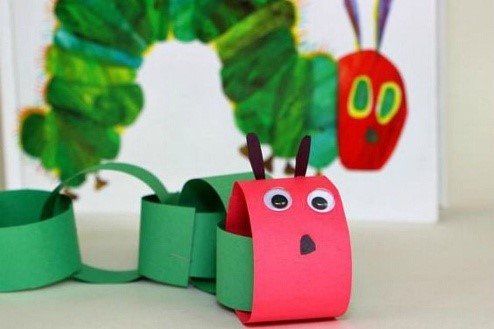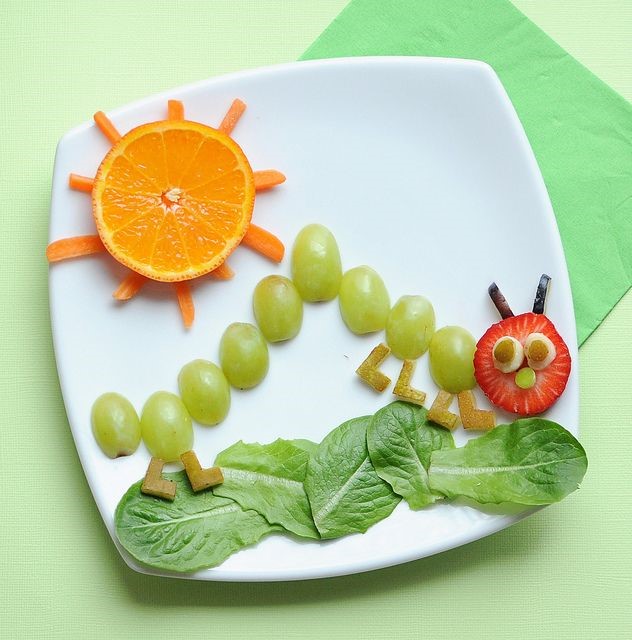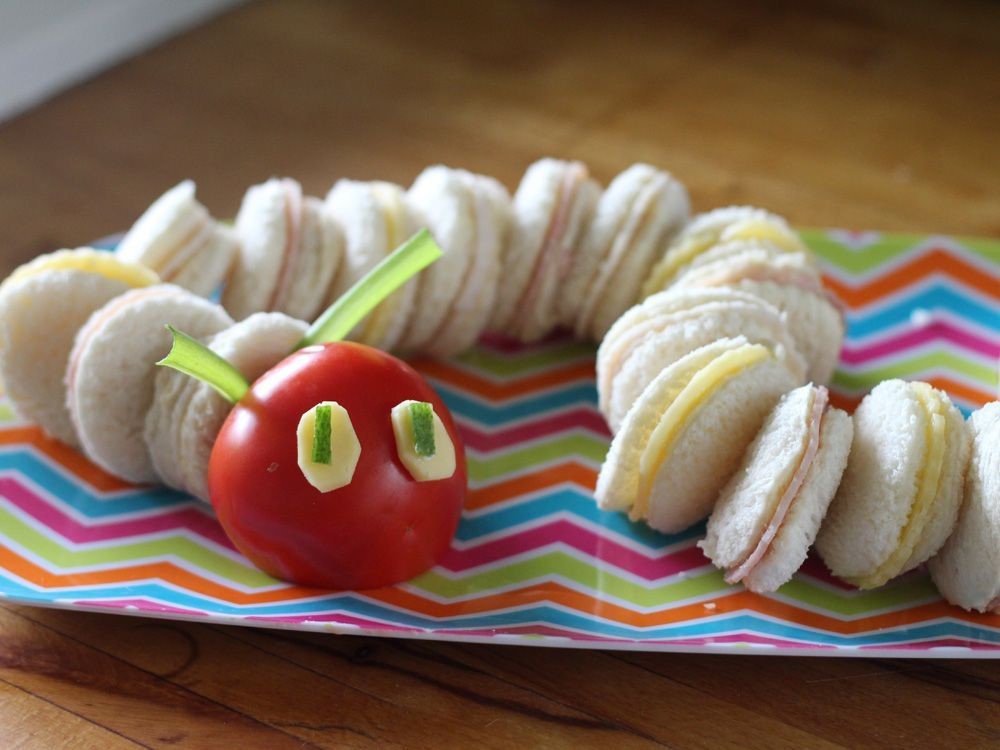Measure
To use the names of the days of the week correctly. (M8)
- Practise saying the days of the week. Talk about what day it is today, yesterday, tomorrow and so on. Remind your child what days they go to school and when it is the weekend.
- You might like to sing some songs online to remind your child of the order they come in.
- Read the story of The Very Hungry Caterpillar and use name cards to put the days in the correct order. Ask questions such as, ‘what day comes after Monday?’ ‘What day comes between Wednesday and Friday?
- ’Refer to the Very Hungry Caterpillar story and ask your child what it ate on each day of the week. Use the story to help sequence the days of the week.
https://www.twinkl.co.uk/resource/t-t-7405-the-very-hungry-caterpillar-days-of-the-week-cards
To sequence the names of the months of the year correctly. (M9)
- Write the months of the year on pieces of card/paper and hide around your home or in the garden. Your child needs to go on a treasure hunt to find them all. They will then put them in the right order. Muddle up the cards when your child is not looking and see if they can sequence them again. Change round two cards and ask your child to find the ones you have changed.
- Ask questions about what is the 2nd, 4th, 10th month and so on. What month comes after or before September?
- There are plenty of songs online about months of the year.
Writing
To be able to segment to spell simple words. (M8)
- Use picture cards to encourage your child to write simple words by themselves. Encourage them to sound out (segment) the words e.g. c-a-t and then write them using the alphabet sheet if needed.
- Use individual letter cards to form words – you could cut up the alphabet sheet below.
- You could also use the Very Hungry Caterpillar book to find simple words to write e.g. sun, moon and so on.
| a | b | c | d | e | f |
| g | h | i | j | k | l |
| m | n | o | p | q | r |
| s | t | u | v | w | x |
| y | z |
To write with clear spacing between words and be legible to the reader. (M9)
- Practise writing using correct letter formation.
- Write over the word sheets first and then write the words independently.
- Use the writing prompt pictures to complete simple sentences based on the book.
- Remember to leave finger spaces between each word.
- Make your own Very Hungry Caterpillar book – use your own words and illustrate it.
https://www.twinkl.co.uk/resource/t-l-4547-days-of-the-week-writing-practice-worksheet
https://www.twinkl.co.uk/resource/t-t-7765-the-very-hungry-caterpillar-trace-the-words-worksheets
Reading
To recognise or read a growing repertoire of familiar words or symbols, including their own names. (M8)
- Read together The Very Hungry Caterpillar. You could cut out the puppets and use these as part of your story-telling. Encourage your child to read words that they recognise. Use the pictures in the book to help them. You could also use the link below for word cards.
- Read different books with your child and encourage them to pick out words that they recognise. Find words around the home that they can read e.g. food packaging, newspapers or magazines, labels.
https://www.twinkl.co.uk/resource/t-t-1231-the-very-hungry-caterpillar-stick-puppets
https://www.twinkl.co.uk/resource/t-t-1216-the-very-hungry-caterpillar-word-cards
To make predictions about story content within a simple story structure. (M9)
- Read The Cautious Caterpillar to your child (the link is given below). Encourage them to read some of the words themselves. Stop at different parts of the story and ask your child to predict what might happen next. Use the link below for the comprehension activity.
- Practise making predictions about characters and what happens next in the story with different books that your children enjoy. Ask question such as ‘Why did Goldilocks go in the bears’ cottage?’
- Read The Very Hungry Caterpillar together. Ask your child what they think might have happened next at the end of the story.
Speaking and listening
To link up to four key words/signs/symbols to communicate about their own experiences or tell a familiar story. (M8)
- Tell the story of The Very Hungry Caterpillar in your own words by using the pictures as prompts.
- Talk about something that you remember such as a birthday, holiday, Christmas, going to the park and so on.
- Talk about your favourite toy, game or story.
To confidently express their likes and dislikes to others. (M9)
- Talk about what food and drinks you like and dislike and why.
- Tell adults at home what you would like to eat for a meal when asked.
- Talk about stories, films, tv programmes, games you like or dislike. Which part did you like best and why? Who is your favourite character? Which part made you laugh or feel sad?
Science
To show they have observed patterns or regular changes in features of objects, living things and events, for example, chrysalis/butterfly day/night. (M8)
- Find out about the life cycle of a butterfly.
- Learn the correct names of the cycle e.g. caterpillar, chrysalis/pupa, metamorphosis etc.
- Remember that when the cycle ends, it then starts all over again and again and again!

https://www.youtube.com/watch?v=62IzQBB4AKI
- Make a picture or model to show the life cycle. You could use a paper plate or circle of card and draw pictures of the different stages. There are lots of ideas online on sites such as Pinterest.

To recognise, and describe some common materials. (M9)
Materials are the things that objects are made from.
Materials can be in one of two groups:
1. Man-made- e.g. glass, plastic. 2. Natural- e.g. sand, wood, leaves.
- Go on a hunt round your home. Find things that are made from materials such plastic, wood, fabric, glass, metal etc. Draw pictures of them if you can and write labels.
- Put the things you have found into two groups – man-made and natural.
- Describe what the different materials are like (their properties) e.g. hard, soft, bendy, rough, transparent and so on.
- Match materials that feel the same.
.
Art and Design
To develop their ideas and use materials and processes working in two and three dimensions. (M8)
- Make pictures of models of a caterpillar.
- Use the Very Hungry Caterpillar book to help with illustrations.
- Make pictures or models of the different things the caterpillar ate.
- Use paint, colouring pencils, felt pens, chalks (two dimension) and collage/model of different materials (three dimension).



To explore a variety of materials and processes to create their own work. (M9)
- Make pictures or models of a butterfly or the life cycle of a butterfly.
- Use a range of different materials such as paint, colouring pencils, pasta, recycled boxes, pipe cleaners, buttons, ribbon etc.
- Try using handprints or footprints in paint and turn into butterflies.
- Use different methods of joining materials if you are making a model such as glue, sellotape, string, blu-tak etc.



Cooking
- Use different fruits listed in the story to make a fruit salad or fruit kebabs. See how many of the different foods the caterpillar ate you can use in a recipe.
- Make some butterfly cup cakes.
- Use the story to encourage healthy eating by making food inviting and exciting.


PE / Dance
To follow and imitate sequences and patterns in their movements. (M8)
- Follow a dance or yoga programme such as ‘Just Dance Kids’ or ‘Cosmic Yoga’ and copy the movements.
- Act out the movements that you could find in the Very Hungry Caterpillar story such as crawling, eating, spinning or flying.
https://www.youtube.com/watch?v=pT-s1-phgxs Cosmic Yoga – Coco the Butterfly story
To copy, repeat and explore simple skills and actions with basic control and coordination. (M9)
- Use the first link to copy a butterfly dance.
- Use the music from the links below to make up your own dance movements.
- Practise crawling like a caterpillar, munching through lots of food, spinning a cocoon and fluttering like a butterfly. Put these movements into a sequence and then repeat them. See if you can find some music that goes with your dance.
https://www.youtube.com/watch?v=Lkza_tRlNRE butterfly dance
https://www.youtube.com/watch?v=_tUBBh4QzTU
https://www.youtube.com/watch?v=_-gNaNOWdg8
Humanities
To recount episodes from their own past. (M8)
- Think about a happy memory in your life such as a birthday, Christmas, holiday, new pet, new baby and so on. Draw a picture and ask an adult to help you write about one of these memories.
- Look at some photos of family and friends – what do you remember about these photos?
To express their views on features of the environment of a locality. (M9)
- What can you see out of the windows in your home? Make a list of all the things you can see e.g. trees, roads, river, buildings.
- Which of these features that you can see do you like or dislike? Why?
- If you have a garden, try and draw a plan of it or make a model. Which parts of your garden do you like or dislike? What parts would you like to change and how could you do this?
- Think about our school playground. Which parts do you like best and why? What parts could you change? What things could you add to the playground to make it more exciting?
